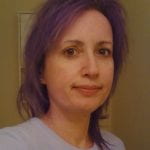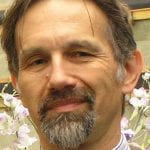Research Mentors are the vital component of the coordinated collaborative structure of the IBA. They provide the rich and diverse expertise beyond the boundaries of their home institutions, creating this unique and vibrant foundation of the intellectual enterprise. Mentors join the IBA by invitation extended from the Board of Directors.
Below are the Research Mentors who are currently active within the IBA.
Fusun Akman, Mathematics, Illinois State University

Research interests related to biomathematics: Modeling with difference equations, Genetic algebras, Genetic algorithms, Random graphs, algebraic graph theory, and random gene regulatory networks, Curriculum development (graduate and undergraduate biomathematics courses).
Olcay Akman, Mathematics, Illinois State University

Computing-intensive modeling, artificially intelligent networks, evolutionary computing, genetic algorithms. Modeling in integrated pest management, disease dynamics, quantitative analysis, stochastic gene regulatory networks, agent-based modeling.
Lester Caudill, Mathematics, University of Richmond

Infections caused by antibiotic-resistant strains of bacteria, especially in hospital wards. Stochastic differential equations with agent-based modeling to create a simulation tool for testing resistance prevention and control strategies in hospital wards. Also interested in other biomedical applications of mathematical modeling: the formation of bacterial biofilms, and their impact on the effectiveness of antibiotic treatment regimens, cancer progression and chemotherapy, disease spread, immune response to bacterial pathogens.
Timothy Comar, Mathematics, Benedictine University

The study of the dynamics of models of for integrated pest management, diseases with vaccination strategies, other ecological models, and gene regulatory networks using impulsive differential equations, stochastic modeling, networks, agent-based modeling, and other discrete and continuous models. Modeling biological phenomena with topological and geometric structures, including knot theory.
Allison Harris, Physics, Illinois State University

Computational study of biological networks. Her research interests include: the structure of networks; artificial neural networks (ANN) to produce atomic collision cross sections that are used in proton therapy modeling. the effects of stochasticity in gene regulatory networks (GRN), ANN in understanding memory, Scaling behavior of GRN, computational GRN to predict genetic mutation rates.
Hannah Callender Highlander, Mathematics, University of Portland

Cellular Signaling Pathways, Cellular Motility, Physical Activity Measurement, Modeling of Infectious Diseases on Networks.
Dan Hrozencik, Mathematics, Chicago State University

Stochastic modeling of biological systems, impulsive differential equations, agent-based modeling, Leslie matrices, integrated pest management, gene regulatory networks.
Steve Juliano, Biology, Illinois State University

Community ecology (especially the roles of interspecific competition and predation in communities), ecology of mosquitoes, connections between behavioral, physiological, population and community ecology, applied statistics, and the application of mathematical tools to ecology.
Anuj Mubayi, IBA Fellow in Residence

Computational and Mathematical researcher and his research program focus on ecological modeling and dynamics of neglected tropical diseases in human populations. His research is driven by complexity inherent at the vector-host interface in tropical countries, where multi-host pathogens such as Leishmania or Trypanosoma Cruzi persist and adapt to novel environments. He combines theoretical models to field data in order to deepen understanding of fundamental principles of disease transmission and adaptation and apply those principles to interpret observed patterns, uncover driving mechanisms, and design effective control policies. His research often involves the development of new mathematical tools, in nonlinear dynamics and stochastic process, for ameliorating the impact of neglected tropical diseases for impoverished populations.
James Peirce, University of Wisconsin-La Crosse

Application of mathematical techniques to problems in biology, chemistry, engineering, and business. Currently collaborating on a mathematical model (system of differential equations) for a host parasite system in the upper Mississippi River System.
Winnie Powell, Mathematics, Canine University at Mutt City

Dr. Powell specializes in optimal car chasing algorithms and smart bone-hiding networks. She has minimal tolerance for other canines and prefers the company of IBA members who routinely carry potato chips.
Zoi Rapti, Mathematics, University of Illinois at Urbana-Champaign

Differential Equations and Mathematical Biology. Relations between the thermal denaturation profiles of DNA sequences and the location of promoters-regions of DNA providing a control point for regulated gene transcription-and other significant regulatory regions. Also working on models that describe DNA configurations and dynamics. Disease models for Daphnia (waterflea). How community ecology, such as competitors and predators, shape the epidemics.